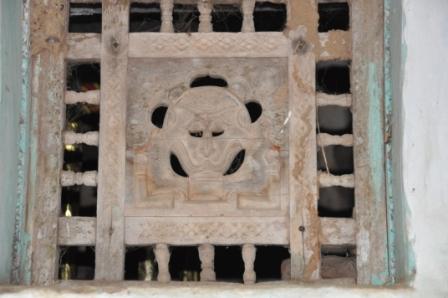Strap: Indian National Trust for Art and Cultural Heritage (INTACH), a non-profit organisation, has discovered the second wooden temple of the state in Gopinath Jew temple
BHUBANESWAR: Gopinath Jew Temple, which is one of only two wooden temples of the state, was discovered by Intach’s Anil Dhir and his team at Gadaitapokhari village in Nimapara recently. A special report is being prepared for official recognition while the state government is planning to list it under conservation programme soon.
Until very recently, the state apparently housed only one wooden temple in Surya temple of Buguda. However, the recent discovery has added Gopinath Jew Temple, also known as Durga Thakurani, to the list. The temple was established in 1750 CE and is a private temple of four erstwhile zamindar families. The temple is home to Goddess Durga and Lord Gopinath.
The temple has stood the test of time. The main temple houses Gopinath, whereas the small temple on the right has a small image of Durga. The Astadhatu image of Gopinath is centuries old. Even though it is a private temple, it is open to the villagers during festivals.
Festivals like Kartika Purnima, Gaham Purnima and Dusshera are celebrated at the site. The Dusshera festivities are a four-day affair in which the locals participate. During Dolo Purnima, the image of Gopinath is taken in a Biman (palanquin) to the surrounding twelve villages which formed a part of the old Zamindari. The God is then brought home after a ritualistic bath in the Prachi River.
This temple is the only thatched wooden temple in the entire Prachi valley and among the few in the state. The entire structure is on a square plot of 200ft on each side. Placed on a four feet raised platform, the temple is 25 feet in breath and 40 feet in length. The original mud and brick wall was two feet thick which was replaced with a brick and cement wall that is 18 inches thick.
The roof beams are carved with floral motifs. The wooden eaves on the front and side veranda and walkway are carved in the form of elephants, lions, peacocks, swans, parrots and other animals. Many of the original wood carvings have withered away with time. There are painted murals on the inner walls, most of which have faded away.
The woodwork needs urgent preservation and proper treatment. Major changes were made after a part of the temple was destroyed in the Super Cyclone of 1999. The beauty and originality of the temple should be kept intact. The thatched roof is replaced every two years; the owners want to replace it with a R.C.C. slab.
Repair and maintenance is being done by the temple keepers in a piecemeal manner. However, the temple has deteriorated a bit with time. The precious Astadhatu image is prone to theft as it is kept in an insecure manner. According to Dhir, this is the only other wooden temple after the Surya temple of Buguda in Ganjam.
Amiya Bhusan Tripathy, state convener, Indian national Trust for Art and Cultural heritage, said, “The existence of the temple was discovered during the detailed survey of the Prachi Valley Monuments, a project which INTACH has been working on since the last 2 years. He said that even though it was a private temple, the government should step in and ensure that it is properly conserved.
